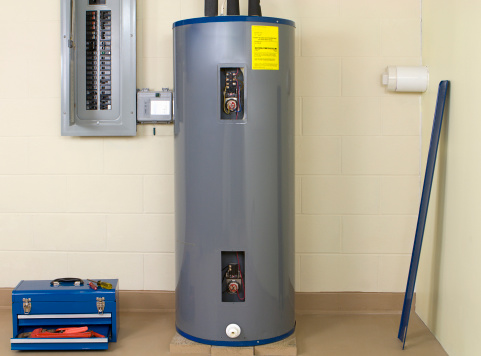
It’s not unreasonable to say that your water heater may be the most valuable appliance in your home. While it’s probably not top of mind or even visible in your day to day, you are using it every day. So when there is an issue, you notice — big time.
And that’s why we’re here to share the most common hot water heater problems that homeowners encounter regularly. That way, you can better diagnose them and fix them before it wreaks havoc on your home.
- No Hot Water
No surprise here; if your water heater isn’t hot, then you have a problem. When your water isn’t heating up, a lack of energy source is likely the cause, so check your electrical connection to ensure it’s on and running properly. If all is working fine, check to see if your breaker has tripped or switched off. For gas heaters, this could be a bad pilot light or a faulty gas connection. If your pilot light is lit but the gas doesn’t ignite, your burner may need repairs.
You can also turn off the breaker and hit the red cut-off button above your thermostat to reset the high-temperature limit on your electric system. If you’re still having issues, contact a professional who can take a look at ignition and flame.
- Low Water Pressure
Unfortunately for older homes, the standard 1⁄2 inch plumbing of the past isn’t doing you any favors in potential water flow issues. Newer homes with 3⁄4 inch plumbing can handle more water, but it doesn’t mean limitations can occur due to clogging.
If you feel like you’re not producing enough hot water, you can try increasing your water pressure by ensuring your aerators in your sink are clear and your water inlet valve hasn’t become partially closed. Otherwise, call Madsen to get to the bottom of it.
- Water is Too Hot
The culprit here is pretty simple: your thermostat is probably too high. The U.S. Department of Energy recommends 120 degrees, but check your water heater’s owners manual for adjusting appropriately.
- Water Leaks
One of the most common water heater issues are leaks. It’s actually inevitable at some point as natural water eventually corrodes your tank and creates super tiny cracks. But that’s not always the cause. Depending on where the leak is coming from (like the top of your tank), you could have a loose water connection or heating element bolts, a stuck valve, or a bad gasket.
Check all heating elements bolts to make sure they’re nice and tight, and make sure your cold water inlet and hot water out pipes are not rattling or loose. If the leak is coming from the bottom of your tank, it could be a condensation issue, which can be solved by turning up the thermostat. If water is leaking from your pressure relief valve, it could mean a corroded tank, which unfortunately means you need to replace your water heater right away.
- Strange Smell
Your water heater shouldn’t stink. If it does, there’s a chance there’s sediment or minerals build up in the pipes. In many cases, this can cause the water to change color or become cloudy as well. When iron pipes rust, the iron’s sediment can get trapped and hinder the flow of hot water, which reduces its temperature and pressure. Calcium and magnesium can do the same if the water is very hard.
Annual flushing of your system can prevent this buildup. And while at-home kits do exist, we recommend calling a professional with the right, heavy equipment for the task.
And if it smells like rotten eggs, then you could have a case of bacteria. Crank up the temperature to about 140 degrees and it should kill it off. If not, try cleaning your tank with chlorine bleach.
If you have any questions about strange smells, low water pressure, or lack of hot water associated with your water heater, the experts at Madsen are here to help. Let us know your concerns, or schedule a routine maintenance check today!


